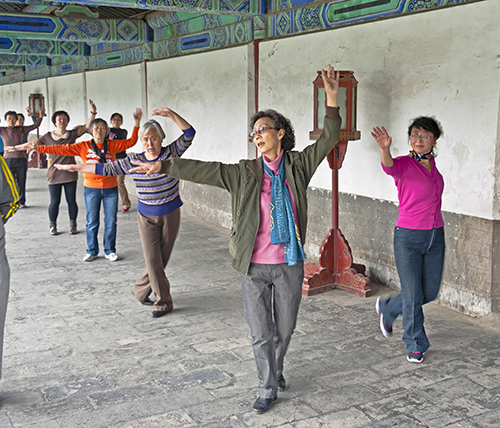Study examines physical activity and park use in China


The first research study in mainland China using observational methods to assess park use, physical activity and demographics may ultimately have implications for millions of Chinese citizens.
Internationally, parks have been consistently shown to be an important community asset for physical activity, but little has been known about the relationship between park usage and physical activity in China until now.
With rapid economic development in China, there has been a corresponding increase in obesity. New research published in Preventive Medicine Reports lays the groundwork for further research in the development of interventions to promote active park use by Chinese citizens.

Dean Jay Maddock, Ph.D., of the Texas A&M Health Science Center School, and a team of American and Chinese researchers evaluated park use and physical activity in eight parks in urban areas of Nanchang, China, a city of approximately 5 million. Findings indicated major differences in park users, types of physical activity and level of activity compared to similar park studies conducted in other countries including the U.S.
A total of 75,678 people were observed in the parks over 12 days with 48 total observations per park using the System for Observing Play and Recreation in Communities (SOPARC). Parks were observed four times per week (two weekdays and two weekends), in three-hour intervals between 6:00 am – 9 pm, four times per observation day for a total of 48 observations per park.
Adaptations to SOPARC included adding and subtracting activity codes to better reflect activities in Chinese parks such as tai chi, dance and mahjong as well as the inclusion of the daily average Air Quality Index (AQI) scores to capture air pollution levels in the city, which is reported daily by the city government in Nanchang.
“Most park users were older adults, rather than children and teenagers, and about half of park users were found to be physically active and engaged in moderate-to-vigorous physical activity usually on weekdays rather than weekends,” Maddock said. “Fewer women were observed in parks than men, but were more likely to be engaged in moderate-to-vigorous physical activity, which appears to be linked to the types of activity they engaged in.”
Women were most often seen engaged in organized dancing led by an instructor or walking, while men were engaged in discussions and games.
Researchers noted that the apparent difference in activity preference might explain the differences in moderate-to-vigorous physical activity by gender, which are inconsistent with results from western population, where research shows men more active than women.
Temperature directly affected resident’s choice to go to the park whereas air pollution did not. Parks were most frequently used in the early morning and afternoon and less used at mid-day and evening with more individuals using the park when temperatures were less than 30°C.
Parks tended to be slightly busier on days when the AQI was higher. The reason is unclear, but the Chinese population appears to be indifferent to the AQI level unless there are extremely high levels of pollution.
“More than half of the observed park users were over 60, which is quite different from research findings in non-Asian cities where there are very few older adults,” Maddock said. “It is unclear if parks have lost popularity or will lose popularity among Chinese youth over the next few decades.”
Many factors can affect park use. Future studies are needed to understand which park features can attract a diverse pool of users to positively affect physical activity.
“As China’s population becomes more dependent on motorized transportation and sedentary jobs become more common, parks may become more important in providing safe, convenient places to engage in physical activity,” Maddock said.
Media contact: media@tamu.edu


